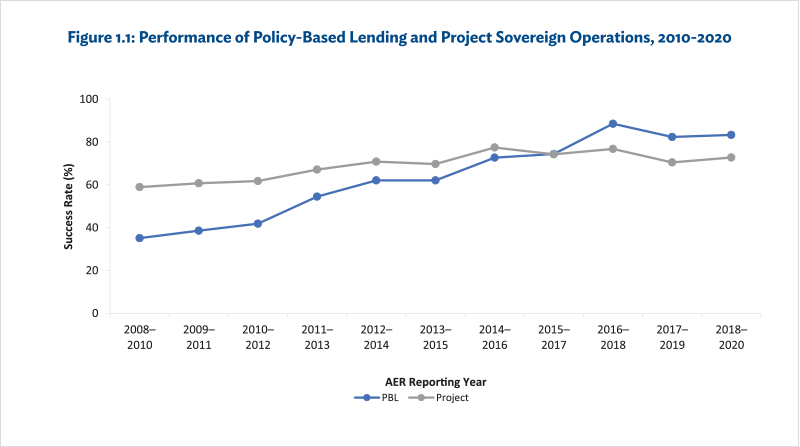The most significant change in PBL design was the progressive replacement of ex ante conditions by “prior actions”, i.e., policy reforms undertaken before loan approval. In the early days, PBL was limited to a single loan (a “stand-alone” loan) typically arranged into two or three tranches, with tranche release conditions specified up front. The stand-alone modality was increasingly replaced by programmatic PBL—a series of distinct loans (“subprograms”), each supporting reforms sequenced in time but linked by a common results framework. Programmatic PBL was introduced by ADB in 1999 but caught on relatively slowly. However, since 2008 it has increasingly become the norm. Under programmatic PBL, each successive PBL operation is approved only when the country has fulfilled certain prior actions. Policy reforms are completed before loan approval, and disbursement follows immediately. The introduction of programmatic PBL in ADB and other MDBs was mainly in response to the implementation problems associated with stand-alone operations with several tranches, a disproportionate number of which experienced significant delays to the disbursement of their final tranches. Policy reform waivers were often requested to ensure these final tranches could be disbursed, or the final tranche was cancelled, resulting in unfulfilled reform objectives. As a result, stand-alone PBL was not effective at meeting country financing needs or at supporting policy reforms.6Operations Evaluation Department (OED). 2001. Special Evaluation Study on Program Lending. Manila: ADB.
The progressive use of programmatic PBL by ADB was followed by a significant improvement in PBL success rates, a trend also experienced by other multilateral development banks.7PBL performance is assessed against the core evaluation criteria of relevance, effectiveness, efficiency, and sustainability. All of these contribute to the overall project success rating (IED. 2016. Guidelines for the Evaluation of Public Sector Operations. Manila: ADB). The ADB PBL average success rate in 2017–2020 was 83%, compared with 35% in 2008–2010.8Independent Evaluation Department. 2020. Annual Evaluation Review. Manila: ADB.From 2016 to 2020, PBL success rates have outperformed those of ADB investment projects by a wide margin (Figure 1.1).

AER=Annual Evaluation Review
Note: Based on updated PBL ratings database
Source: Asian Development Bank (Independent Evaluation Department) database.
- 6Operations Evaluation Department (OED). 2001. Special Evaluation Study on Program Lending. Manila: ADB.
- 7PBL performance is assessed against the core evaluation criteria of relevance, effectiveness, efficiency, and sustainability. All of these contribute to the overall project success rating (IED. 2016. Guidelines for the Evaluation of Public Sector Operations. Manila: ADB).
- 8Independent Evaluation Department. 2020. Annual Evaluation Review. Manila: ADB.
